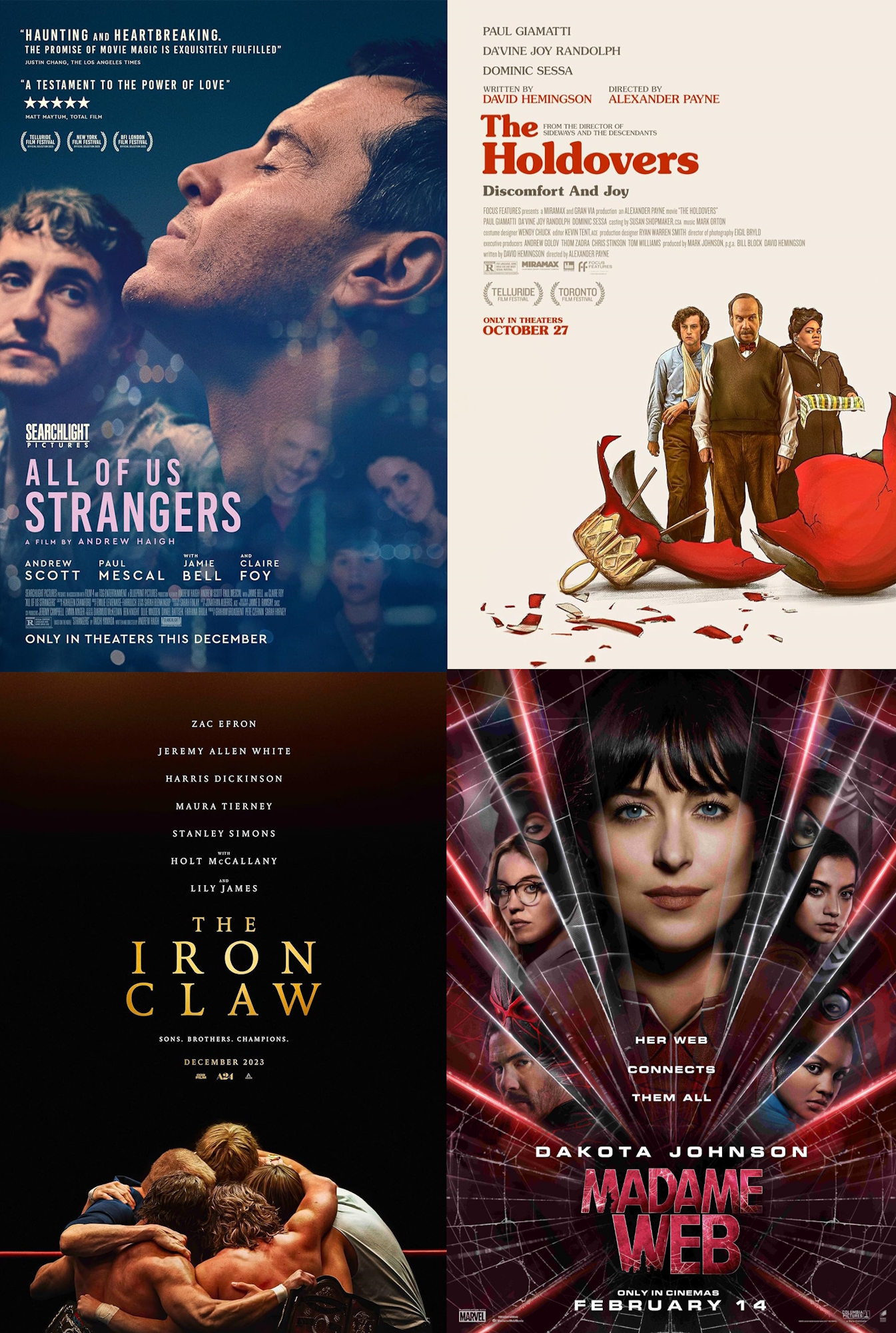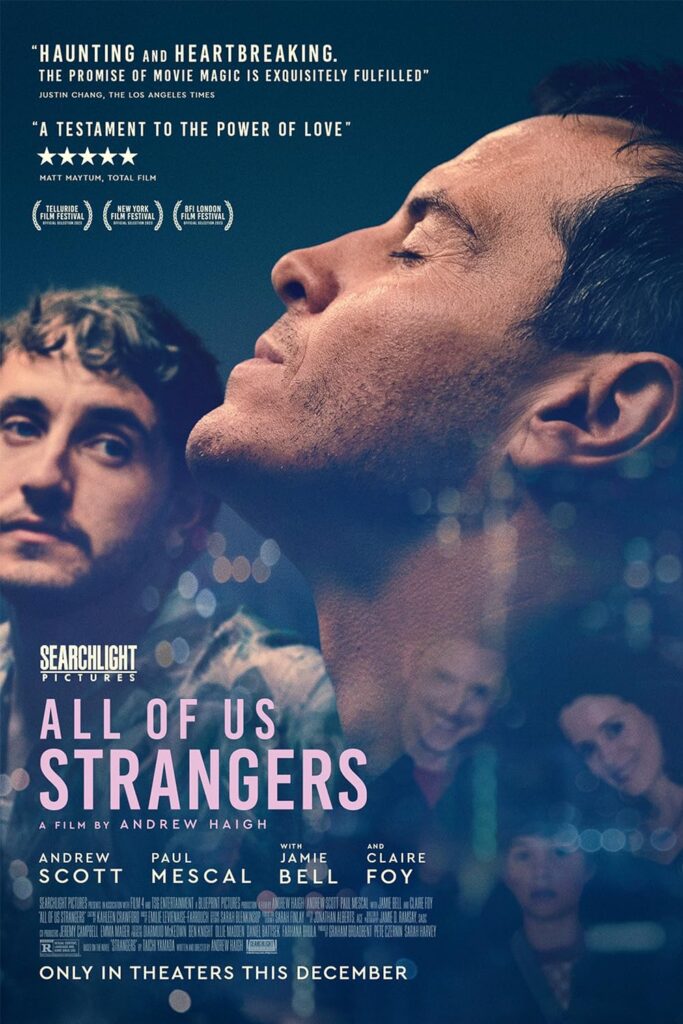
All of Us Strangers
The London cityscape settles on the horizon; hints of the sun are just about to appear above the buildings. Slowly, Andrew Scott’s face fades in, revealing that this image was all just a reflection of a glass pane. As the sun finally rises and blinds us, the movie begins. That is the opening shot of All of Us Strangers, and it almost feels like a perfect closing scene, after watching the film.
Adam is a screenwriter, plagued with leaning over a desk to tap one letter onto Final Draft and call it a day. He shares (by which I mean, they are seemingly the only two residents of) an apartment complex with Harry (Paul Mescal). After Harry makes a drunken pass at Adam at his front door, Adam turns down Harry’s advances, and thus, an awkward meet-cute is born. Returning to his script, we see a mostly empty page except for the words “Ext. Night. 1987”. As soon as you see this, you know we’re going to be digging up some history. Adam travels to his childhood home, reuniting with two people who look far too young to be his parents. The film’s writer and director Andrew Haigh must be delusional to think we’d buy this. But that’s the point: the parents are an illusion, mere ghosts to Adam, who passed away when he was young, seemingly stuck in the past. It’s time to play catch up on the last thirty or forty years with them. I’m sure not much has changed between the ‘80s and now.
The first act of All of Us Strangers is subdued, quiet, and subtle, with few words spoken until the family reunites, leaving all the storytelling to be told through the camera exclusively. Haigh effectively directs these moments and reveals an awful lot about Adam as a character and his current life situation. Discussing his childhood both with his parents and with his new fling, Harry. Having to come out to his mother, while comparing with Harry if being called “gay” or “queer” was more insulting at school.
Dealing with childhood trauma, we’re constantly reminded that Adam is looking into the past and reflecting on it with the ethereal camera work from Jamie D. Ramsay. Mirrors and glass are a staple of the visual language; alongside the warm colours that feel like an embrace from a family member.
The film isn’t concerned with whether his mother and father are apparitions of his true parents or if they’re what he imagines his parents would be like. It’s far more interested in the relationship between a child and his parents, who were taken too soon from him. They’re not perfect, but they try to be the best they can for him, ultimately expressing their love. One particularly moving moment including a needle drop from the Pet Shop Boys proves this indubitably. Meanwhile, the side story with Harry can seem to be a tad bit weaker in comparison to the family reunion; but Paul Mescal’s locked-in performance makes sure that you don’t regret seeing Harry appear on screen.
All of Us Strangers provides us with a glimpse into what would happen if we could say one last goodbye to those taken from us prematurely. Never cynical, always benevolent. While the idea has the potential to branch off into much more – and frankly, totally absurd – places, Haigh guides it on a believable path that never feels ridiculous. It’s a film that I can’t say I see too often,
and it certainly is bringing something new to the table. For everyone involved in the production, their parents, wherever they are, would undoubtedly be proud of them.
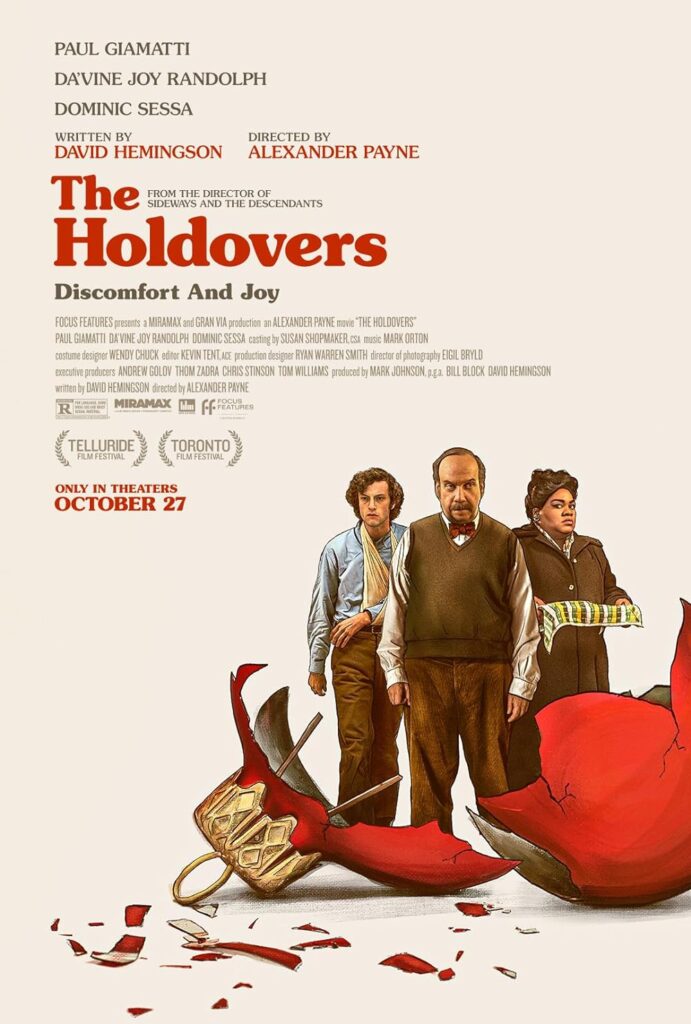
The Holdovers
December in school is seen as the holy grail of all the months on the calendar. Destined to escape the circular and receive time off from working hard, or hardly working. But for those few, unfortunate people – a.k.a. “the holdovers” – home isn’t an option. They’re trapped in the cave that is Barton Academy, with a teacher who won’t let a second pass without making a historical reference, and a head cook who has run low on fresh food to supply for meals (you better like frozen peas). Sounding like a hellish time, Alexander Payne manages to make your time watching it anything but that, thanks to its fresh-from-the-‘70s look.
It’s the end of the semester and hard-ass teacher, Paul Hunham (Paul Giamatti) has one last thing to do before that bell rings one more time: Hand out terrible grades to his students, then he’s off for the Christmas break – except he’s not. After giving the son of an extremely important donor a failing grade, he’s been punished with staying at the academy over the Christmas break with the children who aren’t going home. Tasked with being the legal guardian of four children (which quickly turns into five when Angus Tully, played by Dominic Sessa, finds out his mother is having a honeymoon instead of a Christmas dinner), Paul puts a strict regimen of study and physical activity on the group of students. Their wish of Christmas being every day has turned into Christmas being their everyday. All until one of the wealthy kids’ father shows up and manages to take them all on a skiing trip. All except one, Angus Tully, whose parents couldn’t be reached to give him permission to go. Now, only a student, a classics teacher, and a recently bereaved head cook share the halls of an abandoned academy together.
If you asked someone on the street what year this film was made, they would more than likely guess somewhere in the range of 1970-1979. Hell, even I still think it was made back then while knowing it just released. This achievement can only be attributed to the extremely talented filmmaking team who put together such a textured, grainy image – through the use of Eigil Bryld’s fantastic cinematography – alongside amazing production design and costume apparel. From the cheesy zoom of Paul standing outside the academy, crying out Mister Tully’s name to the endearing wipe transitions from one scene to the next. This is the ‘70s, which will lead people to the obvious question: Why don’t they make them like they used to?
To accompany the terrific look of the film, are three extremely strong performances from Paul Giamatti, Dominic Sessa, and Da’Vine Joy Randolph. From those three, I have to give a special mention to Da’Vine Joy Randolph, who brings such a powerful performance that never commands the picture, but rather complements it; showing her character Mary as a woman grieving, but never letting anger get the best of her. One particular scene at a party shows this best when she whips around and throws her arms up with emotion, but instinctively pulls them back. Thanks to writer David Hemingson, she not only prepares meals but also cooks up amazing lines, making us eager to hear what will come out of her mouth next, whether it’s hilarious or poignant. In fact, both aspects are all over the script from Hemingson; thanks to humorous direction from Payne and a great line delivery from Giamatti. We laugh and then we want to console. It’s a mixture of John Hughes’ The Breakfast Club and Planes, Trains and Automobiles. If that’s not a way of explaining that a story is human, I don’t know what else is.
The Holdovers is a classic story of learning more outside the classroom than in it. Whether it’s learning which eye is your teacher’s glass eye or what trimethylaminuria is (a disease where the body reeks of fish). But it’s mostly about learning who you are as a person and what you need to change about yourself to improve. There’s a moment in the film where two people shake hands instead of hugging. I was so confused as to why they didn’t go with a hug in the moment. Looking back on it now, the handshake was perfect; It was meaningful and conveyed more than a hug could have ever done. To answer the question as to why they don’t make movies like this anymore: They just did.
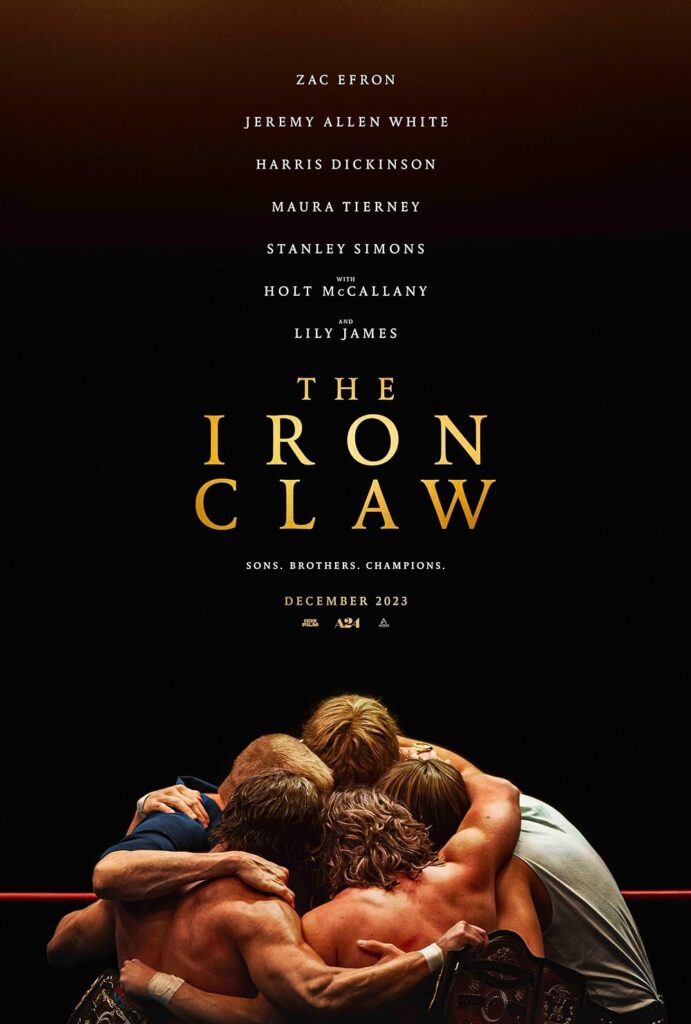
The Iron Claw
Who says that wrestling is fake? When those two men step into the ring, it’s the realest moment of their life. They’re about to be battered, bruised, and bloodied. Try telling them that it’s fake then. When you bring family into it, none of it is fake. You couldn’t get more authentic. This is exactly what the Von Erich’s did, brothers in arms.
In the world of wrestling in the late 1970s, Kevin Von Erich – an absolute beast of a man; you couldn’t get a man to look more like a wrestling action figure if you tried – mentors his two younger siblings into the ring, David and Kerry. The former being a natural on trash talk, and the latter being a natural Olympic athlete, but hops into the world of wrestling after America backs out of the Olympics in Russia. Meanwhile, the youngest brother, Mike, gets picked on by their father, a now-retired wrestler, to get some muscle on him and be like his brothers. But Mike’s interests lay in the arts, like his mother, rather than the ring.
The story of The Iron Claw is as if someone added all the tragedy of William Shakespeare’s work and added a bit more on top of it. The fact that this actually is true is utterly insane. In fact, the director cut back on the factuality of it by removing a Von Erich; a move which was made as he didn’t believe that the film could take such another tragedy without it seeming completely unbelievable. A choice that I should probably critique, but, in actuality, it was the right decision.
Trying to build the ultimate family wrestling dynasty, Fritz Von Erich pushes his children hard to be the best they can be; teaching them that real men don’t cry along the way. For his naïve children, they vie for his approval and recognition. Getting little emotional support from him, but making it up by always having each other’s backs. This brotherly bond is the tenderness in a film that is all rough and tough. Director Sean Durkin recognises this and gives sufficient screen time to each kid so they’re not forgotten about, especially with Mike, who could easily have fallen under the radar. But make no mistake, Zach Efron is the main event of this billing. His performance grips you into a headlock and constantly slams you onto the canvas – much like how the film is repeatedly performing a metaphorical and literal bulldog on him. Painful zooms on Kevin lock you into his story and makes you a part of the distress he’s going through.
The greatest achievement I could adorn this film is how much it changes throughout the runtime. It was like I was watching a different movie at multiple points. The atmosphere has changed, the dinner table doesn’t feel the same, and people’s relationships feel impacted. It all comes through the screen and attacks you. Although not as physically gruesome as The Wrestler, the story is almost as hard to watch as if someone got hit with a bat lined with nails.
The finishing move of the iron claw is a painful one that involves someone’s hand wrapping around the entirety of your skull. Once you’re in it, it’s hard to get out of it. This is exactly what Durkin does to the viewer – he gets you into its grasp and makes you watch the pain that is about to be showcased. The bond and connection of these brothers prove to be so overwhelming – if you leave your seat without feeling anything, you gotta be a machine – thanks to the very tangible, emotional connection practically oozing out of the screen. There’s no kicking out of this one.
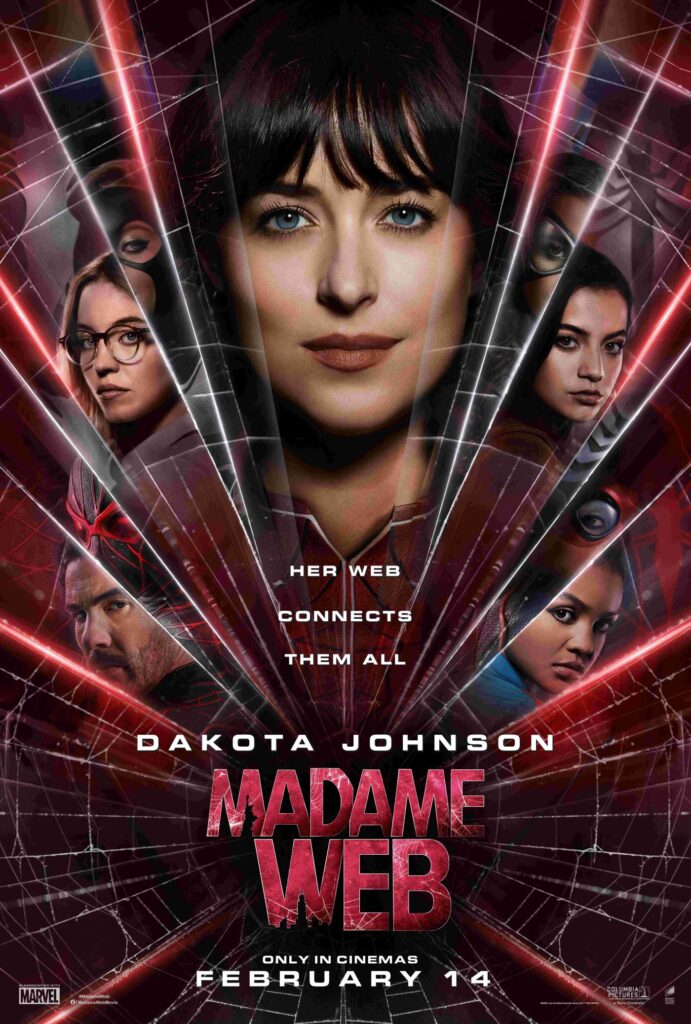
Madame Web
For a character whose main power includes seeing the future, it feels all too ironic that she has decided to hop into a genre where its future seems as uncertain as ever. Sony has been asking the question, “How do you make a Spider-Man universe without Spider-Man?”, since 2018. The best answer they’ve managed to conjure up is a shrug and a random assortment of spider-related characters. For the first time since 2014, Sony has let a Webb take the helm of a Spider-Man movie, with even worse results than last time. They should start dusting up the place and let the only webs involved come from Spider-Man if they want to release a quality movie.
1973. The Amazon. A pregnant woman is in search of a magical spider which grants magical powers (this is a Spider-Man movie after all). Once she has found the spider, she is double-crossed by her bodyguard and is left for dead in the jungle. Thankfully, a tribe of tree-crawling, supernatural people swoop her up and proceed to save her baby through water birth, but not her. Cut to 2003, where this baby has turned into Cassie Webb, a paramedic who is having visions of the near distant future – That’s So Raven began airing the same year, so surely she knew what was happening – and foresees that three teenage girls are in serious danger of being killed at the hands of a mysterious man dressed in a black and red suit (not the business but superhero kind).
The Morbius screenwriting pair of Matt Sazama and Burk Sharpless are somehow back at it again with a second shot at a Spider-Man adjacent Sony film. How do they differentiate Madame Web from their last outing? They gotta come out strong with the opening to show that they’ve progressed as writers. So, what do they do? They trade the random jungle in Costa Rica for the Amazon, and trade researching bats for spiders. To say that there’s evidence of creative bankruptcy would be underselling it. Toss in the dreadful dialogue that toys around with the word “power” more than a Kanye West song; and winks at you with the word “responsibility” like a grandmother trying to hide the fact she gave you a cookie. Oh, and in case you are confused at certain points, Cassie reads aloud a book of her mother’s research in an empty apartment to give the audience some exposition. Always a good sign of quality writing.
Dakota Johnson plays a character whose job it is to help people but who simultaneously doesn’t want to help the three girls she’s been stuck with. There’s not an inch of hope in her voice that this movie could be good. Who can blame her? She’s playing a superhero whose ability is to see roughly around four minutes into the future. I’m unable to comment on Celeste O’Connor, Sydney Sweeney or Isabela Merced, as their roles are reduced to stock characters: rebel girl, uptight girl and smarty-pants girl. If you’re expecting the superhero team-up as shown in the trailers, you’ll be sorely disappointed to learn that they are in their suits for approximately 40 seconds of screen time. Those 40 seconds are towards the beginning of the film in an utterly absurd dream sequence, which made me think I was having a lucid dream by watching it.
The dream in question was from the antagonist, Ezekiel Sims. A villain so devoid of any personality, that the most interesting thing about him is the fact he has a Z in his name. His quest to kill these three girls is aided by a woman at a computer. A computer that has the ability to trace out the faces of the women from Ezekiel’s dream perfectly, and age them down about 10 years to show how they’d look as teenagers. Then, it’s able to track and find them in a matter of milliseconds after searching the entirety of New York for them. Don’t worry, 2003 was known for its advanced technology in this world; some guy on the train is playing a PSP, which didn’t come out until 2005.
I will give the film props for being experimental with its camera movements, which tries extravagant things to bring some sort of intrigue to the film. However, I’m convinced it’s mostly to a comedic effect. Watch the first five minutes and try not to laugh at the hilarious, tonally-off zooms it performs. The action consists of a car crashing through a diner to hit a guy, a truck crashing into an ambulance. and an ambulance crashing through a billboard to hit a guy. If that’s not a metaphor for the movie being a car crash, I don’t know what is.
While Spider-Man is used to crawling on the wall with great pace, this film crawls across the floor like Jordan Belfort after a night of debauchery, except we don’t get to see the fun bits prior to the crawling – and it’s sure as hell isn’t as entertaining as watching Leonardo DiCaprio crawl. I kept waiting for the film to kick on and do something, but by the time I was over an hour in, it hit me that this was the course that the movie was set on. There’s a moment when the three girls are stuck in a house watching a movie, just before someone’s water breaks in the kitchen. They rush into the room to see if she’s OK, meanwhile, I’m trying to watch over their shoulders to see if the movie they were watching was any more entertaining than the one I’m supposed to be watching. Luckily, there was Adam Scott – playing an extremely thankless role – to grab my attention back to the scene.
Superhero films should be the epitome of letting imaginations run wild, with endless possibilities with these incredible characters that can seemingly do anything. But Madame Web isn’t interested in doing anything incredible, and lacks any sense of campiness to be funny while taking itself too seriously for a concept that is quite asinine. I had only one wish after watching it: Hoping I was actually the one researching spiders in the Amazon so I wouldn’t have been put through Madame Web.

Dale Kearney is the Film Editor for Post-Burnout, and is a passionate film enthusiast, boasting multiple years studying and working within film, with an intrigue in all genres of film, from horror to comedies to musicals.

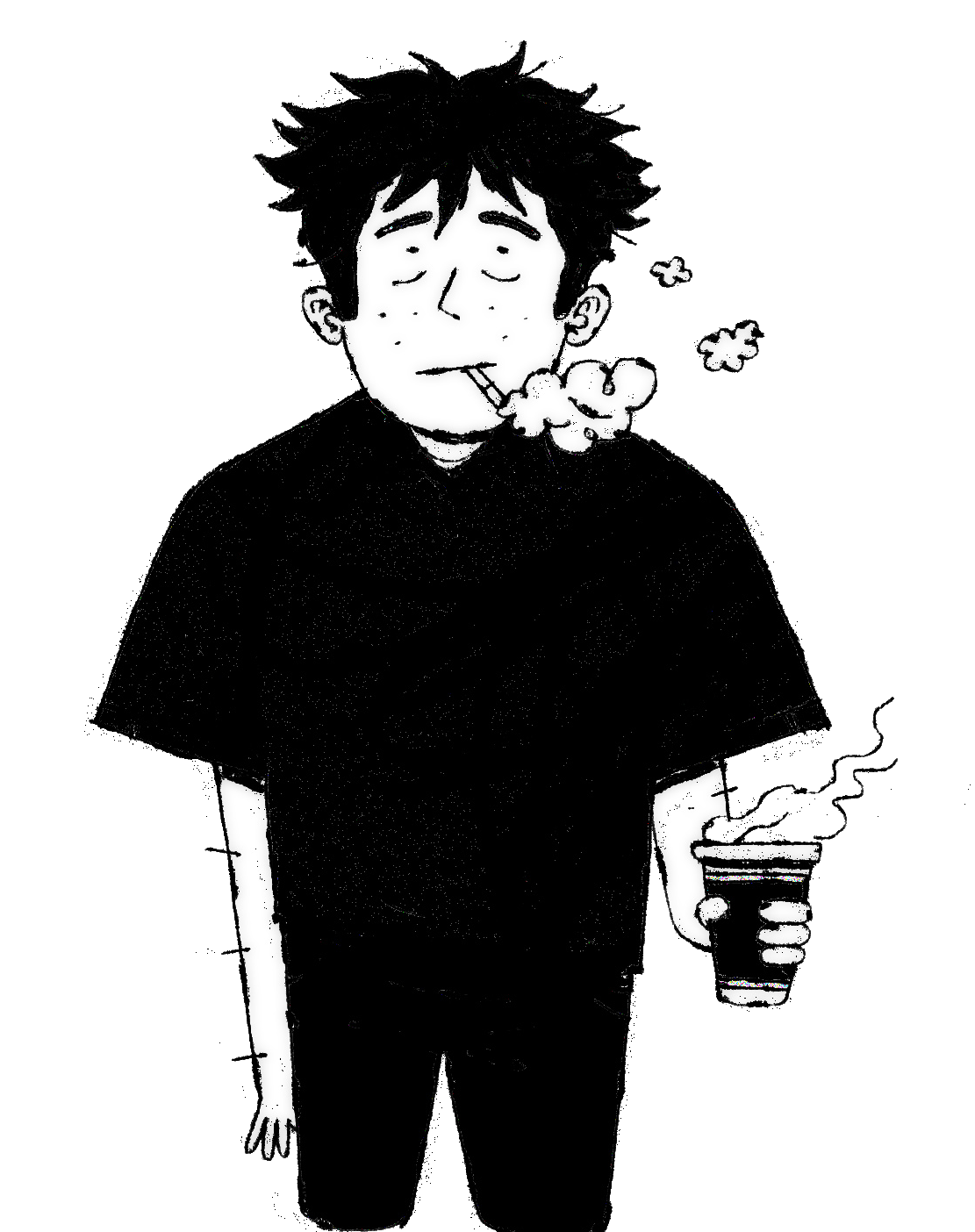 POST-BURNOUT
POST-BURNOUT